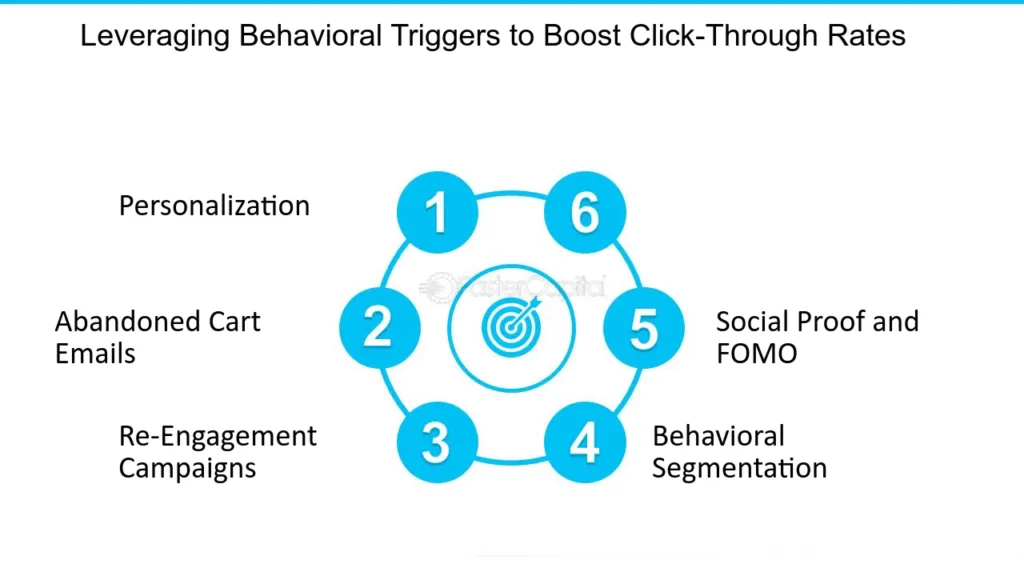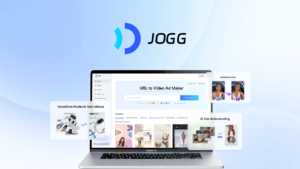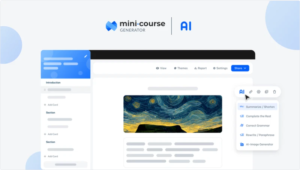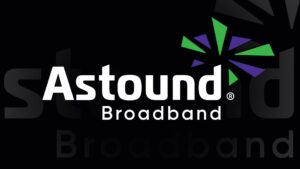Behavior-triggered emails are highly effective. They respond directly to user actions.
This personalized approach can significantly boost engagement and interaction. In today’s digital landscape, engaging your audience is crucial. Behavior-triggered emails are a powerful tool to achieve this. Unlike generic emails, these are sent based on specific user actions. This makes them more relevant and timely.
For instance, a user abandons a shopping cart. A well-timed email reminder can prompt them to complete the purchase. Such emails create a connection with the user. They feel understood and valued. This connection can lead to higher engagement rates. It’s a simple yet effective strategy. Let’s explore how these emails can transform your engagement metrics.

Credit: fastercapital.com
Introduction To Behavior-triggered Emails
In today’s fast-paced digital world, staying connected with customers is essential. This is where behavior-triggered emails come into play. These emails are a powerful tool for marketers. They help engage customers based on their actions.
Understanding the importance of these emails can transform your marketing strategy. Let’s dive into what behavior-triggered emails are and their significance in modern marketing.
What Are Behavior-triggered Emails?
Behavior-triggered emails are automated messages. They are sent based on a user’s actions or behavior on your site. Common triggers include:
- Signing up for a newsletter
- Abandoning a shopping cart
- Browsing specific products
- Completing a purchase
These emails are highly personalized. They address the unique needs and interests of each user. This personalization makes them more effective than generic emails.
Importance In Modern Marketing
Behavior-triggered emails are crucial in today’s marketing landscape. They offer several benefits:
- Increased Engagement: Personalized emails grab the user’s attention. They are more likely to open and read them.
- Higher Conversion Rates: Targeted messages lead to higher sales and conversions. They offer relevant information and promotions.
- Improved Customer Experience: Users receive timely and relevant content. This enhances their overall experience with your brand.
- Efficient Marketing: Automated emails save time and effort. They allow marketers to focus on other tasks.
In summary, behavior-triggered emails are a vital tool for engaging and converting customers. They provide a personalized touch that modern consumers expect.
Types Of Behavior-triggered Emails
Behavior-triggered emails are powerful tools for boosting engagement. They are sent based on specific user actions. This makes them highly relevant and timely. Understanding the types of behavior-triggered emails can help you use them effectively. Here are some common types of behavior-triggered emails.
Welcome Emails
Welcome emails greet new subscribers or customers. They are the first step in building a relationship. These emails thank users for joining and provide useful information. Often, they include a special offer to encourage the first purchase. A well-crafted welcome email sets a positive tone.
Abandoned Cart Emails
Abandoned cart emails target users who add items to their cart but do not complete the purchase. These emails remind users of the items left behind. They often include an incentive, like a discount, to encourage checkout. Abandoned cart emails can recover lost sales.
Re-engagement Emails
Re-engagement emails reach out to inactive users. These emails aim to rekindle interest. They may ask for feedback or offer special deals. The goal is to remind users of the value of your product or service. Re-engagement emails can win back lost customers.
Crafting Effective Subject Lines
Crafting effective subject lines can significantly boost your email engagement. A well-crafted subject line grabs attention and compels the recipient to open the email. It sets the tone for the rest of the content. This section will provide tips on creating engaging subject lines for behavior-triggered emails.
Personalization Tips
Personalization makes your subject lines stand out. Use the recipient’s name. Mention their recent activity on your website. This creates a sense of connection. For example, “John, check out new items based on your recent purchase.” It feels tailored and relevant. This increases the chances of your email being opened.
Creating Urgency
Creating urgency in your subject lines encourages immediate action. Phrases like “Limited time offer” or “Only a few left” work well. They create a fear of missing out. This can prompt the recipient to act quickly. For example, “Hurry! Only 2 days left to grab your discount.” This taps into their need to not miss out on great deals.

Credit: www.linkedin.com
Segmentation Strategies
Effective segmentation strategies are crucial for maximizing the impact of behavior-triggered emails. By segmenting your audience based on specific behaviors, you can deliver personalized and relevant content that resonates with each user. This approach not only increases engagement but also builds stronger relationships with your audience.
Identifying User Behaviors
Understanding user behavior is the first step in segmentation. Track actions like:
- Website visits
- Product views
- Downloads
- Purchase history
- Email open rates
These insights help you create segments that reflect the interests and needs of your users. For example, users who frequently visit your blog may be interested in your latest articles. Meanwhile, those who view specific products might be ready for a targeted offer.
Creating Targeted Lists
Once you identify user behaviors, the next step is creating targeted lists. This involves grouping users based on their actions and preferences. Here are some strategies:
- Behavior-Based Segments: Group users who show similar behaviors, like visiting the same product pages.
- Engagement Levels: Separate highly engaged users from those who are less active.
- Purchase History: Create segments based on past purchases to suggest related products.
Use these lists to send customized emails. For instance, send discount offers to users who abandoned their carts. Share new blog posts with readers who engage with your content. This targeted approach ensures your emails are more relevant and engaging.
Designing Engaging Content
Behavior-triggered emails can significantly boost engagement. The key lies in creating content that captures attention. Designing engaging content involves using various elements that can make your emails more appealing. Let’s explore these elements in detail.
Visual Elements
Visual elements make emails more attractive. Images, videos, and infographics can grab attention quickly. A well-placed image can convey a message faster than text. Use high-quality images relevant to your content. Videos can explain complex ideas in a simple way.
Consider using infographics for data presentation. They are visually appealing and easy to understand. Charts and graphs can make statistics more engaging. Remember to optimize all images for fast loading times.
| Element | Purpose |
|---|---|
| Images | Grab attention |
| Videos | Explain complex ideas |
| Infographics | Present data visually |
| Charts | Show statistics |
Compelling Copy
A compelling copy is crucial for keeping readers engaged. Use short sentences and simple language. Address the reader directly to make it personal. Ask questions to involve them in the content. This makes the email feel like a conversation.
Use bullet points to break down information. This makes it easier to read. Highlight important points in bold. This draws attention to key messages. A good subject line can boost open rates. Make it catchy and relevant to the email content.
- Use short sentences
- Address the reader directly
- Ask questions
- Use bullet points
- Highlight important points
- Craft a catchy subject line
Combining these elements can make your behavior-triggered emails more engaging. Keep the content relevant to the reader’s actions. This ensures the email feels personal and timely. Engaging content can significantly boost your email campaign’s success.
Timing And Frequency
Timing and frequency are crucial components of any successful email marketing strategy. Behavior-triggered emails can significantly boost engagement when sent at the right moments. This section will delve into the optimal send times and the importance of avoiding email fatigue.
Optimal Send Times
Sending emails at the right time ensures that your audience is most likely to engage. Studies show that the best times to send emails are:
- Tuesday and Thursday
- Between 10 AM and 2 PM
These times often align with the highest open and click-through rates. Consider your audience’s time zone for better engagement. Use A/B testing to determine the best times for your specific audience.
Avoiding Email Fatigue
Sending too many emails can lead to email fatigue, where recipients become overwhelmed and disengage. Here are some tips to avoid this:
- Segment your audience to send relevant content.
- Limit the frequency of your emails to avoid overwhelming recipients.
- Use behavioral triggers to send emails only when necessary.
By balancing timing and frequency, you can keep your audience engaged without causing fatigue. This strategy helps maintain a positive relationship with your subscribers.
Measuring Success
Understanding how behavior-triggered emails impact engagement is crucial. Measuring success helps you see what works and what needs improvement. Let’s explore the key metrics and how to analyze results.
Key Metrics To Track
Tracking the right metrics is vital. Here are some key metrics to focus on:
- Open Rate: The percentage of recipients who open your email.
- Click-Through Rate (CTR): The percentage of recipients who click on links within your email.
- Conversion Rate: The percentage of recipients who complete a desired action.
- Bounce Rate: The percentage of emails not delivered to recipients.
- Unsubscribe Rate: The percentage of recipients who opt out of your email list.
These metrics give a clear picture of your email campaign’s performance.
Analyzing Results
After collecting data, analyzing the results is the next step. Here’s how you can do it:
- Compare Metrics: Look at your metrics over time. Identify trends and patterns.
- Segment Performance: Break down data by different segments. Find out which groups respond best.
- Test Variations: Implement A/B testing. Test different subject lines, send times, and content.
- Adjust Strategy: Use insights to refine your email strategy. Focus on what works and improve what doesn’t.
Analyzing data helps you make informed decisions. This leads to better engagement and higher conversion rates.
Best Practices And Tips
Behavior-triggered emails significantly boost engagement by sending personalized messages based on user actions. These timely emails resonate with recipients, encouraging more interaction. Engaged users often return, enhancing overall email campaign effectiveness.
Behavior-triggered emails can significantly boost engagement. They respond to user actions, making them highly relevant. To maximize their effectiveness, follow these best practices and tips. Implementing these strategies will help you create more engaging emails.A/b Testing
A/B testing is crucial. Test different subject lines. Compare email content variations. This helps identify what resonates with your audience. Use clear metrics to measure success. Open rates, click-through rates, and conversions are key indicators. Always test one element at a time. This ensures accurate results. Regular testing helps refine your approach.Continuous Improvement
Continuous improvement is vital. Analyze email performance regularly. Look for patterns and trends. Adjust your strategy based on insights. Personalize content for better engagement. Keep your email list clean. Remove inactive subscribers. This improves deliverability. Stay updated with industry trends. Adapting to changes ensures long-term success.Case Studies
Behavior-triggered emails have shown impressive results in boosting engagement. To understand their impact, let’s explore some case studies. These examples highlight the effectiveness of tailored email campaigns. They provide valuable insights into what works and what doesn’t.
Successful Campaigns
Many companies have seen success with behavior-triggered emails. Here are a few notable examples:
| Company | Campaign | Result |
|---|---|---|
| Amazon | Abandoned Cart Emails | 45% increase in purchase rates |
| Netflix | Personalized Recommendations | 30% boost in user engagement |
| Spotify | Re-engagement Emails | 20% rise in active users |
Lessons Learned
From these campaigns, several key lessons can be drawn:
- Timely Emails: Sending emails at the right time is crucial. Amazon’s abandoned cart emails are sent within an hour of cart abandonment.
- Personalization: Tailored content increases engagement. Netflix recommends shows based on viewing history.
- Re-engagement Strategies: Regular touchpoints keep users active. Spotify sends re-engagement emails to users who haven’t logged in recently.
These case studies demonstrate the power of behavior-triggered emails. They show that understanding user behavior and acting on it can significantly boost engagement.

Credit: selectedfirms.co
Frequently Asked Questions
What Are Behavior-triggered Emails?
Behavior-triggered emails are automated messages sent based on user actions. They engage users by providing timely and relevant content.
How Do These Emails Improve Engagement?
These emails improve engagement by delivering personalized content. This increases user interaction and satisfaction.
Why Are Behavior-triggered Emails Effective?
Behavior-triggered emails are effective because they match user actions. They provide relevant information, increasing the likelihood of interaction.
What Types Of Behavior Can Trigger Emails?
Common triggers include sign-ups, purchases, and abandoned carts. These actions prompt targeted emails to users.
Conclusion
Behavior-triggered emails significantly boost engagement. They connect with users at key moments. This personal touch improves open rates and click-throughs. Users feel valued and understood. This leads to higher satisfaction and loyalty. These emails cater to individual needs. They enhance the overall user experience.
Businesses benefit from increased interactions. Using behavior-triggered emails is a smart strategy. It strengthens relationships and drives success. Start implementing them today. Watch your engagement grow.







